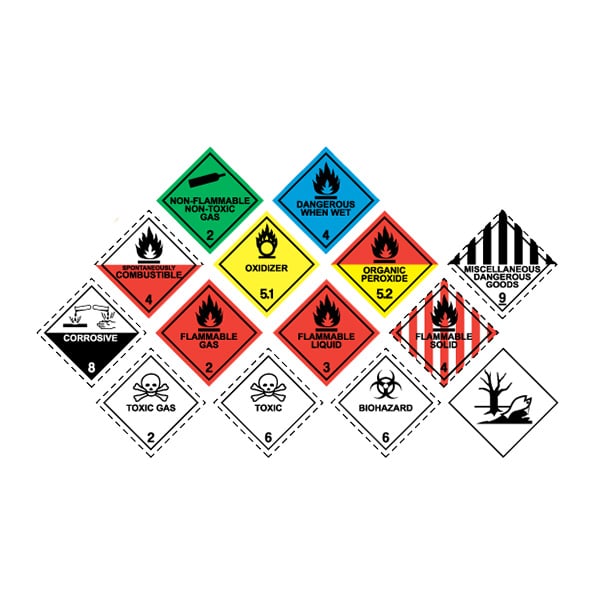
ADR Core, Packages, Tanks, Required Classes
From: £641.00
A five-day course, you can choose what group of ADR classes (excluding specialist classes 1 & 7) you need to train on, while also choosing a variation or core, packages, or tanks. Complete this course as either a initial to gain your certification, or as a refresher to renew your current certification.
Class Groups
Group A will include the following ADR classes:
- Class 2 (Gases)
- Class 3 (Flammable Liquids)
- Class 6 (Toxics)
- Class 8 (Corrosives)
Group B will include the following ADR classes:
- Class 4 (Flammable Solids)
- Class 5 (Oxidising Agents)
- Class 9 (Miscellaneous)
[ADR Core is included]
Still unsure, speak to an advisor today!
Our team of advisors are on hand to discuss your training requirements and answer any questions you may have. Book today to secure your space on our next training course.
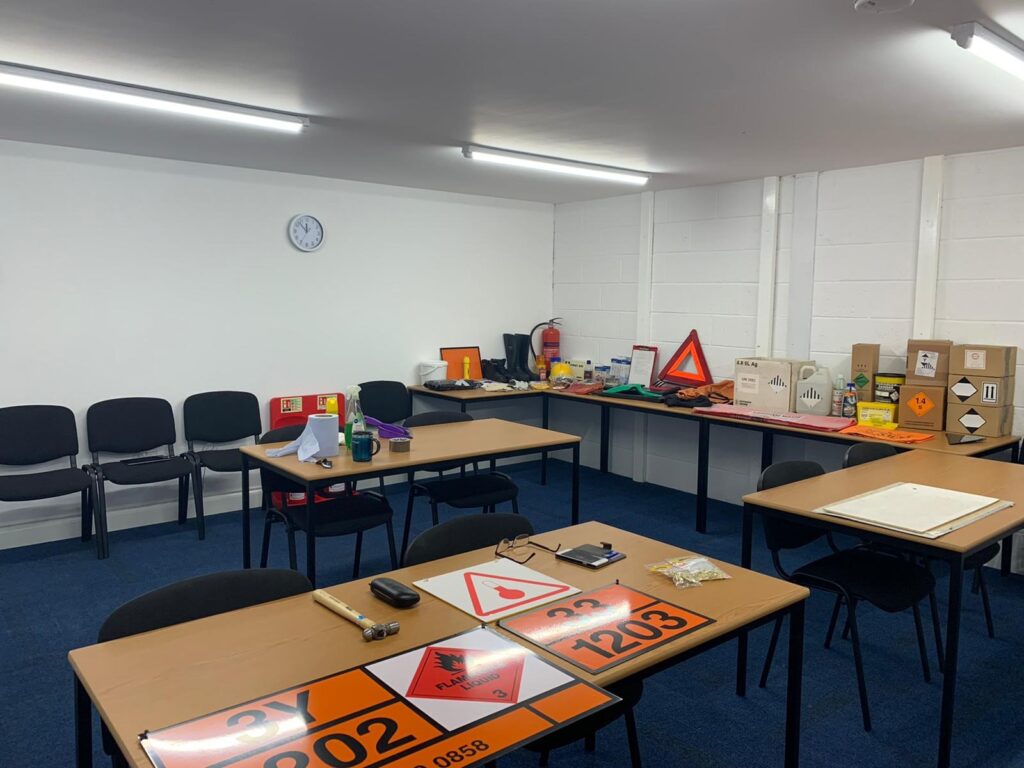
What’s Included
- Becoming certified in the carriage of dangerous goods by road will make you more applicable for ADR related job roles.
- Upon completion of the training, you can thereafter apply for multiple opportunities to start a career situated around dangerous goods.
- understanding the importance of dangerous goods will help you become more aware of hazards, and more so, how to prevent them.
- You can further your education by becoming a dangerous goods safety advisor, which are a hot commodity in the logistics sector. This is because, by law, you must have a DGSA appointed if your organisation transports dangerous goods.
- The skillsets obtained through our ADR training is the first step to building your new career and furthering your knowledge of dangerous goods.
Course Modules
- Core
- Regulations relevant to the training of person(s) involved, as well as the employers responsibility to conduct risk assessments, and drivers responsibility of the carriage of dangerous goods.
- General rules on the segregation of dangerous substances
- Actions taken in the event of a vehicle breakdown
- Security and high consequences of dangerous goods. Including reporting irregularities suspicious activities and security incidents
- Photographic identification and compliance with security checks
- Basic knowledge of Personal Protective Equipment (PPE), Uses and limitations and decontamination procedures.
- Emergency first aid procedures, such as asphyxiation, frostbite, chemical and general burns, also, chemical contamination.
- Packages
- General requirements governing the carriage of dangerous goods in packages and bulk
- Tanks
- Additional provisions applicable to the use of tanks
- The requirements of the vehicle
- Procedures which are to be followed in relation to the operation of tanks & tank containers
- Knowledge of different filling and discharge systems
- Behaviours of vehicles, tankers & tank containers on road, which includes the movement of the load
- What to do in the event of an accident or incident
- Class 2- Gases
- Class 3- Flammable Liquids
- Class 4- Flammable Solids
- Class 5- Oxidising Agents
- Class 6- Toxics
- Class 8- Corrosives
- Class 9- Miscellaneous
Classes Group A (2, 3, 6 & 8) & Group B (4, 5 & 9) discuss the preventative and safety measure appropriate to each hazard. This includes:
- The characteristics of each dangerous good
- Marking and Labelling
- Dangers and precautions which must be implemented when transporting each class of dangerous good
- Segregation Methods
- Appropriate PPE for each dangerous good
Course Benefits
NDGTC Accredited Training Centre
Experienced Instructors
Course Durations
5 Days
4 Days
Durations available for this specific course.
Course Requirements
To complete your training, you must show a valid ID. If you are completing refresher training, proof of your current certification must be shown, which should be at least 12 weeks before expiry date.
Ongoing Requirements
Refresher training must be completed every five years to remain compliant and keep your training up to date. You must also complete this twelve weeks before your certification expires.
Test Requirements
You will complete a multiple choice examination for each ADR type you are completing. The times of the exams on the day will depend on the components chosen. You must pass all exams you are taking to be awarded your ADR licence.
Core
ADR core must be covered as the basic and legal requirement for the carriage of dangerous goods.
The purpose of ADR training is to ensure that those who wish to work with dangerous goods are aware of the importance of compliance and understand the consequences to those who do not comply with the regulations of dangerous goods.
To complete this training, you must be over 18 years old.
Packages
ADR packages training is for those who need training with the packaging of dangerous goods by road.
ADR packages training covers the necessary skills and regulations that you must comply to as a dangerous goods employee.
To complete ADR Packages training, you must have at least a class 2 HGV licence (also known as a Cat C licence).
There is currently no minimum time you must have had your HGV driving licence for before training for your ADR licence. This suggests that you can pass your HGV driver training, then complete ADR training thereafter.
Tanks
ADR Tanks relates to carrying dangerous goods in tanker vehicles. More commonly known for carrying petroleum or diesel to petrol stations.
After completing the Tanks training course, you should be able to understand all competencies revolving with tanks and the carriage of dangerous good on road within these points.
When looking to complete ADR Tanks training, you should not only expect to have more knowledge and skills to handle dangerous goods in tanks, but you can also progress to becoming a tanker driver. In June 2023, a tanker driver salary average in Hampshire is £48,033.
Further Training
You can look to upskill and complete specialist classes 1 explosives & 7 radioactive materials. Also, you could increase your earning potential by becoming a Dangerous Goods Safety Advisor.
Earning Potential
Reputable Salary Checkers estimate the following for an ADR Class 7 certified driver across the South Coast:
While all efforts have been made to ensure the accuracy of this information, we suggest conducting your own research and use these figures for information purposes only.
Who is this course for?
Those who are looking to handle, package, manoeuvre or transport hazardous goods by road will benefit from doing this course. You can choose Group A, which covers classes 2, 3, 6 & 8, or Group B, covering Classes 4, 5 & 9.
What can I drive with an ADR Certification?
The type of vehicle you can operate depends on the classes you have covered, the course type, and whether or not you have the appropriate licence. For example, if you need to transport flammable liquids, you will need to also have completed ADR in tanks, as well as ADR class 3 training, and most likely have a Category C licence.
If you only need to complete ADR training for ADR for packages, you may not be intending to operate a vehicle of any kind regarding dangerous goods.
What will you receive upon successful completion of this course?
Once you pass all the training and tests, you will be awarded your ADR certificate which specifies what type of dangerous goods class you have completed training & testing for, including if you are certified for ADR in tanks and/or packages.
Frequently Asked Questions
What is Core, Packages, Tanks & Required Class training?
Core, Packages, Tanks & Required Class training is designed to provide essential knowledge for those involved in the transportation of dangerous goods. The “Core” covers essential safety, the “Packages” module focuses on the correct packaging and labelling of hazardous materials. “Tanks” training encompasses the transport of hazardous goods in tanker vehicles & tank containers, such as IBC’s. Finally, the “Required Class” training covers specific regulations for transporting goods classified under various ADR classes.
Who needs Core, Packages, Tanks & Required Class training?
This training is required for individuals who handle, package, or transport dangerous goods by road. It is mandatory for drivers, warehouse workers, and others involved in the logistics of hazardous materials to ensure compliance with safety standards and regulations under the ADR (European Agreement concerning the International Carriage of Dangerous Goods by Road).
Why Choose 2 Start?
Reputable
High Pass Rates
Established in 2008
Industry Leading Training Provider
Independently Owned
6 Dedicated Training Centres
VIEW COURSESTrusted
4.9 Star Rating on Google Reviews
DVSA Approved 3a Examiners
DVSA Approved Test Centres
APAR Approved Training Provider
RLI Certified LGV Instructors
BOOK NOWAccredited
Accredited Instructors & Courses
Regular Accrediting Body Audits
Exceptional Audit Pass Marks
Listed With 9 Accrediting Bodies
Verifiable Accreditations
THE TEAMOnly logged in students who have purchased this course previously may leave a review.
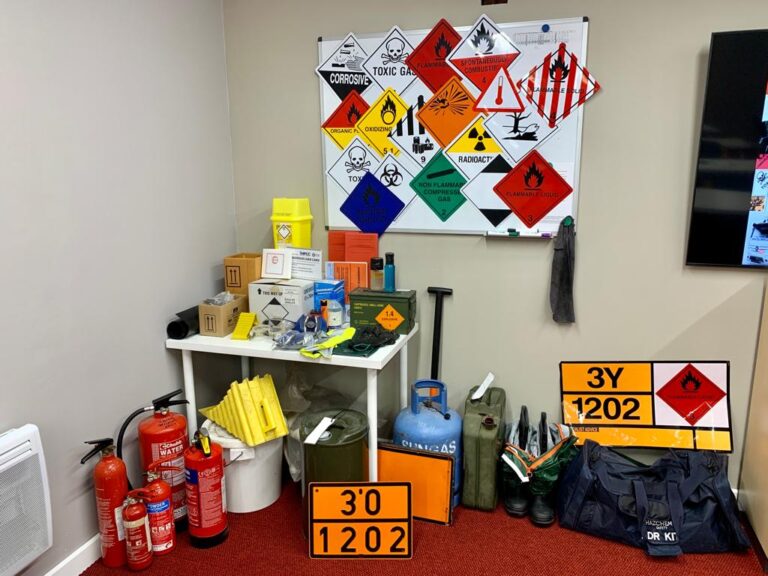

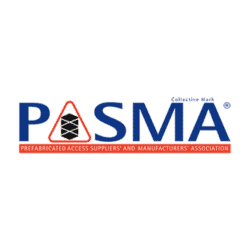





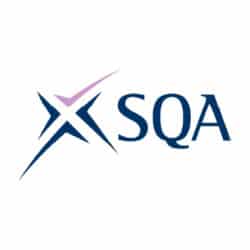
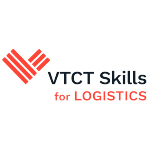

Reviews
There are no reviews yet.